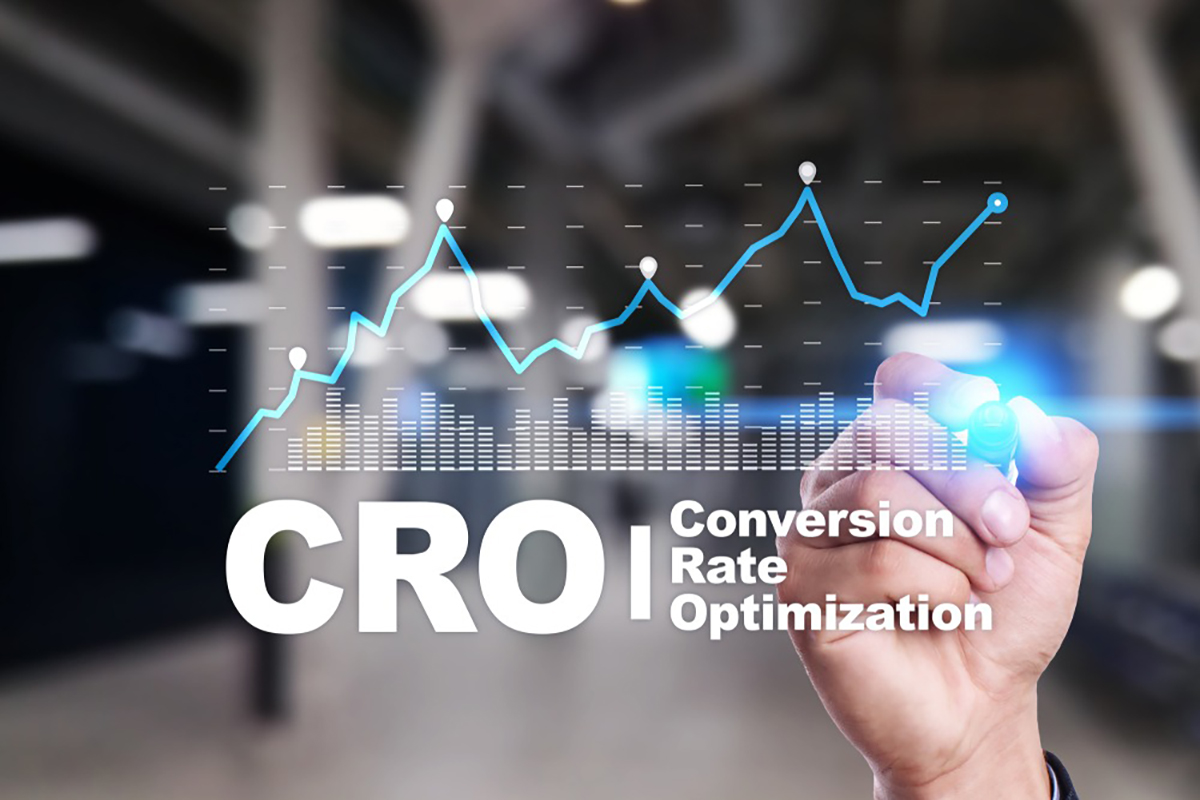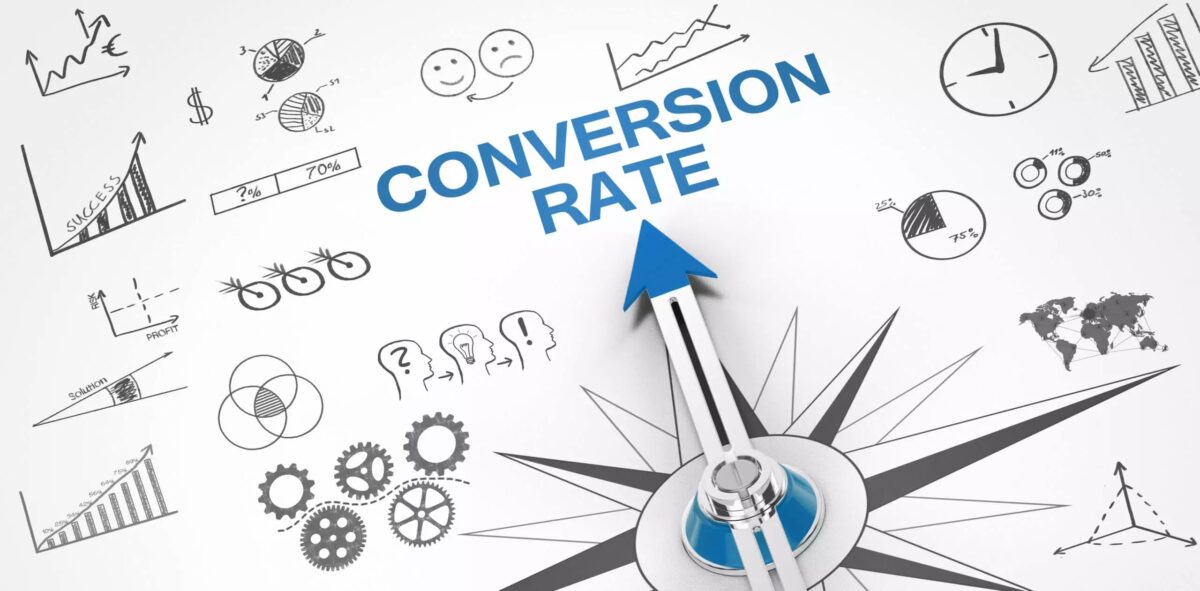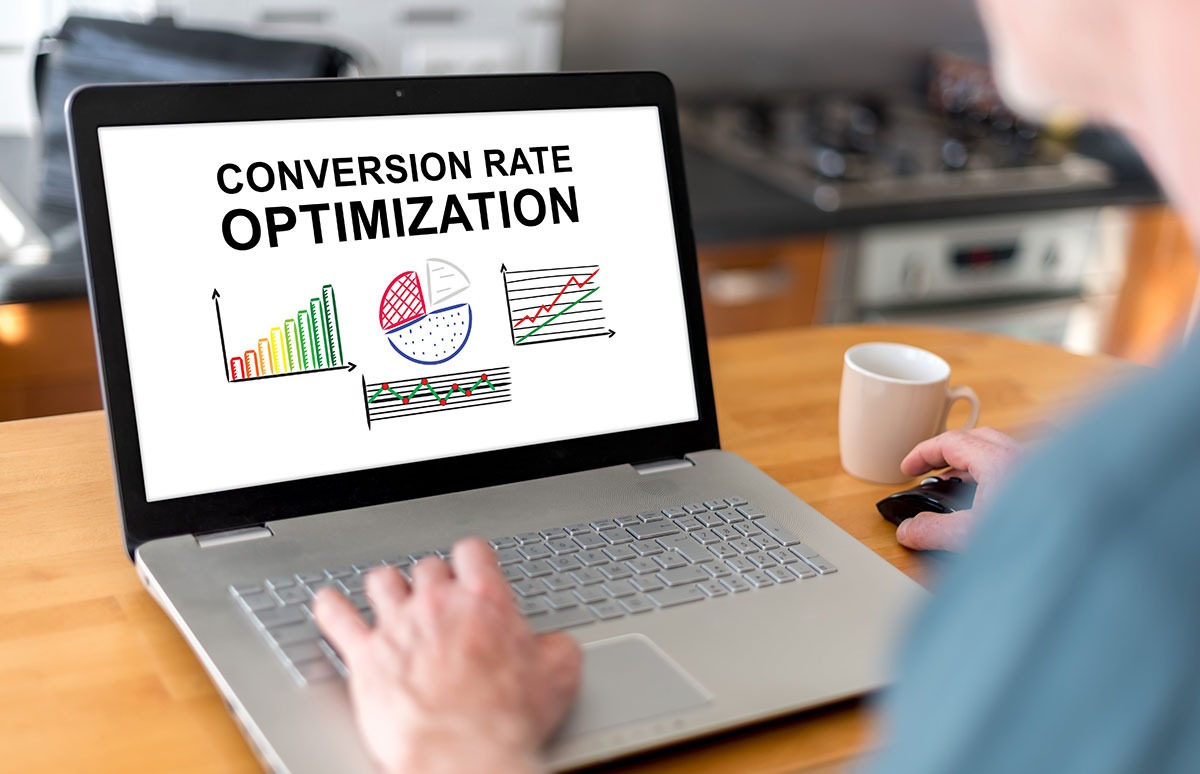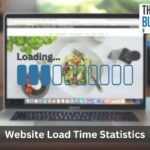If you’re a marketer, you know how much time and effort is put into the planning, execution, and analyses from research and tests to achieve the best conversion rate possible.
We have researched conversion rate optimization (CRO), to provide you with this essential list of conversion rate optimization statistics.
Even though you may have no issues with generating website traffic, converting that traffic into buyers and eventually loyal customers is challenging.
These statistics can help you find ways to fine-tune your CRO.
Post Contents
- 1 Key CRO Statistics
- 2 Essential Conversion Rate Optimization Statistics in 2024
- 2.1 1. The Overall Average Website Conversion Rate Across All Segments Is 2.35%.
- 2.2 2. The Top 25% of Converting Websites Have an Average Conversion Rate of At Least 5.31%.
- 2.3 3. The Top 10% of Websites Are Reaching an Average Conversion Rate of 11.45% and Higher.
- 2.4 4. On Mobile Devices, the Average Conversion Rate Is 1.53%.
- 2.5 5. The Average Conversion Rate for Desktop Devices Is 4.14% Among Online Shoppers.
- 2.6 6. The Average Conversion Rate for Facebook Ads Is 9.21%.
- 2.7 7. Statistics Show that The Food and Beverages Sector Convert the Highest Among Industries at 4.95%.
- 2.8 8. The Lowest Average Conversion Rate Among E Commerce Industries Is 2.35% in The Sporting Goods Sector.
- 2.9 9. In The B2B Space, the Financial and Professional Services Sector Boasts an Average 10% Conversion Rate.
- 2.10 10. Sadly, the Non-Profit Space Experiences the Lowest B2B Average Conversion Rates at 2%.
- 3 Conversion Rate Optimization Landing Page Statistics
- 3.1 12. According to Statistics, 48% of Online Businesses Create a New Landing Page for Each Campaign.
- 3.2 13. Websites that Use 40 or More Landing Pages Generate 12 Times the Leads.
- 3.3 14. by Creating 10 to 15 Landing Pages for Your Different Offers, You Can Increase Your Lead Generation by 55%.
- 3.4 15. Unfortunately, 62% of B2B Companies Have Fewer than Six Landing Pages.
- 3.5 16. an Average of 44% of B2B Website Clicks Direct to Homepages Instead of Landing Pages.
- 3.6 17. One Website Decreased Their Number of Forms from 11 to 4 and Achieved an Increase in Conversions of 120%.
- 3.7 18. You Can Boost Landing Page Conversions by Eliminating the Navigation Menu by Up to 100%.
- 3.8 19. Adding Video to Your Landing Pages Can Enhance Conversion by More than 86%.
- 3.9 20. Use a Clear Call-To-Action (CTA) on Your Landing Page to See Conversion Rates of About 13.5%.
- 4 Conversion Rate Optimization Marketing Strategies Statistics
- 4.1 21. Using Direct Traffic Sources Helps You to Convert the Best at An Average Rate of 3.3%.
- 4.2 22. Paid Search Is a Marketing Strategy that Delivers an Average Conversion Rate of 3.2%.
- 4.3 23. Organic Search Conversion Results Showed an Average Rate of 2.7%.
- 4.4 24. Email Marketing Campaigns Achieve an Average Conversion Rate of 2.6%.
- 4.5 25. Social Media Marketing Campaigns Are the Worst at Conversions with An Average Rate of 1.5% Across All Sectors.
- 5 FAQs
- 6 Conclusion
- 7 Sources
Key CRO Statistics
- The overall average website conversion rate across all segments is 2.35%.
- The top 25% of converting websites have an average conversion rate of at least 5.31%.
- The top 10% of websites are reaching an average conversion rate of 11.45% and higher.
- On mobile devices, the average conversion rate is 1.53%.
- The average conversion rate for desktop devices is 4.14% among online shoppers.
- The average conversion rate for Facebook Ads is 9.21%.
- Statistics show that the food and beverages sector was the highest among industries at 4.95%.
- The lowest average conversion rate among eCommerce industries is 2.35% in the sporting goods sector.
- In the B2B space, the financial and professional services sector boasts an average 10% conversion rate.
- Sadly, the non-profit space experiences the lowest B2B average conversion rates at 2%.
Essential Conversion Rate Optimization Statistics in 2024

1. The Overall Average Website Conversion Rate Across All Segments Is 2.35%.
Keep in mind that this is an average percentage calculated by the various conversion rates across all industries.
This makes a good starting point since that 2% to 3% mark means you’re doing pretty well.
(WordStream)
2. The Top 25% of Converting Websites Have an Average Conversion Rate of At Least 5.31%.
According to conversion rate optimization statistics, the top 25% best converting sites are achieving 5.31% or more.
Remember, these sites are top performers, a level they worked hard for and spent money on to achieve.
(WordStream)
3. The Top 10% of Websites Are Reaching an Average Conversion Rate of 11.45% and Higher.
If you think that 5.31% is a good average among the top 25% websites, you will be amazed with the 11.45% of the top 10% of websites.
In fact, the top 10% of the highest converting websites are achieving nearly 5 times more than overall average of 2.35%
(WordStream)
4. On Mobile Devices, the Average Conversion Rate Is 1.53%.
According to data, mobile users are less apt to convert than desktop or laptop users.
It’s believed that it’s not easy enough to fill out lead forms or payment forms via mobile.
Also, people may not trust mobile-friendly sites or apps.
(WordStream)
5. The Average Conversion Rate for Desktop Devices Is 4.14% Among Online Shoppers.
Between Q2 of 2021 and Q2 of 2022, desktop conversions had the highest conversion rates across all devices at 4.14%.
Looking at the 1.53% average conversion rate among mobile consumers, desktop conversion rates are nearly three times higher.
(Statista)
6. The Average Conversion Rate for Facebook Ads Is 9.21%.
Facebook Ads, advertisements convert at an average of about 9.21%, which is well beyond the overall average of 2% to 3% on websites.
Sometimes it does pay to advertise.
(WordStream 2)
7. Statistics Show that The Food and Beverages Sector Convert the Highest Among Industries at 4.95%.
Data from the final quarter of 2022 shows that the food and beverage segment convert at 4.95%, which is the highest across all industries.
The health and beauty sector has an average of 3.3% conversions.
(Yopto)
8. The Lowest Average Conversion Rate Among E Commerce Industries Is 2.35% in The Sporting Goods Sector.
Sporting goods conversions across the globe achieve 2.35% conversion rates, which is still within the realm of acceptable according to benchmarks.
So, even at the lowest global conversion rates, sporting goods are still in the running.
(Yopto)
9. In The B2B Space, the Financial and Professional Services Sector Boasts an Average 10% Conversion Rate.
B2B, also referred to as B-to-B involves business transactions between businesses. It’s separate from the business to consumer space, or B2C.
In the B2B space, the highest converting sector is in the financial and professional services, at 10%.
(Marketing Sherpa)
10. Sadly, the Non-Profit Space Experiences the Lowest B2B Average Conversion Rates at 2%.
While the B2B non-profit industry averages a 2% conversion rate, which is a good benchmark, it ranks as the lowest of B2B conversion rates across sectors.
This industry includes charities and non-profit organizations which face challenges with conversions.
(Marketing Sherpa)
Conversion Rate Optimization Landing Page Statistics
12. According to Statistics, 48% of Online Businesses Create a New Landing Page for Each Campaign.
In fact, the rule of thumb in today’s marketing realm is “one off, one landing page”. It’s a rule that 48% of online business platforms use for their offers.
It’s important to consider the target demographics for each campaign. Also, doing this will clarify your offers.
(MailBluster)
13. Websites that Use 40 or More Landing Pages Generate 12 Times the Leads.
HubSpot tells us that websites with 40-plus landing pages are generating 12005 more leads. That’s 12 times the leads of websites with a single landing page.
You should have multiple landing pages as a rule.
(HubSpot Blog)
14. by Creating 10 to 15 Landing Pages for Your Different Offers, You Can Increase Your Lead Generation by 55%.
A good landing page practice is to create new landing pages for each campaign. The data shows that by creating 10 to 15 new landing pages you can boost your lead generation by up to 55%.
Who doesn’t want that?
(HubSpot Blog)
15. Unfortunately, 62% of B2B Companies Have Fewer than Six Landing Pages.
Knowing that multiple landing pages is a rule for landing page conversion rate success, imagine 62% of B2B businesses having six or less.
Even with the knowledge of the benefits of having 10, 15, and up to 40-plus landings pages there are still businesses not following the rule.
(HubSpot Blog 2)
16. an Average of 44% of B2B Website Clicks Direct to Homepages Instead of Landing Pages.
In the B2B sphere, an average of 44% of all clicks send visitors to homepages instead of landing pages.
It’s seldom, if ever, a good idea to use your homepage as a landing page.
Landing pages are known to convert much better than homepages.
(HubSpot Blog 2)
17. One Website Decreased Their Number of Forms from 11 to 4 and Achieved an Increase in Conversions of 120%.
The company that increased their conversion rates by 120% is Imaginescape. They did so by reducing the number of form fields on their contact form.
Whether you’re using a landing page or a lead generation on your site, you can get more leads with fewer form fields.
Bring it down and notch and you can enjoy higher conversions.
(Unbounce)
18. You Can Boost Landing Page Conversions by Eliminating the Navigation Menu by Up to 100%.
If you’re using a navigation menu on your landing page, you may be losing conversions.
According to VWO, one company performed an A/B (split) test to find that they could improve their landing page conversions by removing the navigation menu.
(VWO 2)
19. Adding Video to Your Landing Pages Can Enhance Conversion by More than 86%.
Video is a wildly popular format in today’s world. It’s no wonder that adding a video to your landing page can boost your conversions by over 86%.
In this data, the goal for the conversion was for landing page visitors to simply click the subscribe button.
(VWO 3)
20. Use a Clear Call-To-Action (CTA) on Your Landing Page to See Conversion Rates of About 13.5%.
Research shows that landing pages that contain a single, clear CTA can achieve a conversion rate of about 13.5%.
That’s over the benchmark figures for overall average global conversion rates of 2% to 3%.
(Revenue Hero)
Conversion Rate Optimization Marketing Strategies Statistics

21. Using Direct Traffic Sources Helps You to Convert the Best at An Average Rate of 3.3%.
A study by Ruler Analytics related to conversion rates across email, paid search, direct, referral, social media, and organic search showed that direct traffic sources get the highest conversions.
In fact, the average conversion rates from direct traffic sources came to 3.3%
(Ruler Analytics)
22. Paid Search Is a Marketing Strategy that Delivers an Average Conversion Rate of 3.2%.
In Ruler Analytic’s study, they also found that paid search as a marketing strategy resulted in an average conversion rate of 3.2%.
As you might expect, the highest rates were among the financial services, professional services, agencies, and legal services.
(Ruler Analytics)
23. Organic Search Conversion Results Showed an Average Rate of 2.7%.
Marketing strategies often include organic search, which results in an average conversion rate of 2.7%.
The industries with the highest conversions from organic search include professional services, industry, automotive, and legal.
(Ruler Analytics)
24. Email Marketing Campaigns Achieve an Average Conversion Rate of 2.6%.
The same Rule Analytics study showed that email marketing campaigns enjoy an average conversion rate of 2.6% among all industries.
For this marketing segment, the highest converting industries are automotive, real estate, travel, cosmetics, and dental.
(Ruler Analytics)
25. Social Media Marketing Campaigns Are the Worst at Conversions with An Average Rate of 1.5% Across All Sectors.
Ruler Analytics revealed that social media converts the worst with an average rate of 1.5% among every industry.
The conversion rates that made the best showings include healthcare, travel, B2B services, and professional services.
(Ruler Analytics)
FAQs
What Is Conversion Rate Optimization (CRO)?
Conversion rate optimizations includes increasing your website visitor count who take an action on your site like entering a contest, downloading an e-book, subscribing to newsletter, or buying something from your site.
Your website or landing page conversion rate is about the percentage of website visitors that complete the intended action, whether that means making a purchase, filling out a form, or signing up for something.
What’s Considered a Good Conversion Rate?
In terms of “good” conversion rates, your industry plays a key role in CRO.
The average landing page can achieve an average conversion rate of 2.35% regardless of the industry.
However, among the top 25% landing pages are seeing rates of over 5%.
The goal is to get into the top 10% where you can achieve over 11% conversion rates. It’s a challenge that is well worth the work.
What Are the Advantages of CRO?
When you implement conversion rate optimization, you can enhance your customer experience, build solid trust and loyalty, improve your ROI, become more scalable, and more.
What Are Some Ways to Improve Conversion Rates?
There is a lot of information about how to increase your conversion rates, but we have the basics for you to read here.
• Understand your audience’s needs, behaviors, and preferences before you launch your marketing campaigns.
• Create a dynamic and persuasive user/customer experience.3
• Collect feedback from potential and existing customers to help you discover areas where you can improve your campaigns.
• A/B testing across various strategies like your CTA, imagery, with or without certain elements, etc.
• Analyze and optimize your pricing structure and payment options.
• Polish and clarify your landing pages, CTAs, and product profiles and descriptions.
• Calculate your CRO by paying attention to the actions that website visitors are making.
• If possible, increase your marketing budget.
Conclusion
These statistics about conversion rate optimization should remind you to utilize all the tools and resources available to you when you want to get more conversions.
One of the key factors in improving your conversion rates is to test, test, and test again.
Businesses that A/B test landing pages more than 50 times get the best results for conversions.
Another main factor is to know your niche and market it according to the proper format.
For instance, organic search performs best within the professional services industry.
Knowing that desktop conversions are higher among online shoppers than those on mobile devices isn’t a sign that you need to focus solely on desktop CRO.
In fact, over the coming years, there could be a shift and you will want to be part of that shift making conversions across devices.
Plus, you don’t want to miss the conversions you can get from mobile consumers.
We hope you will utilize these conversion rate optimization statistics for your marketing plan in 2023.






























